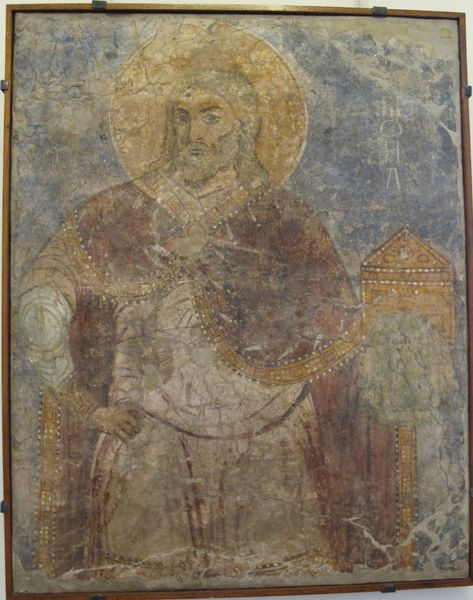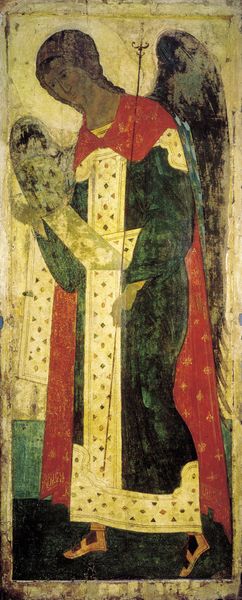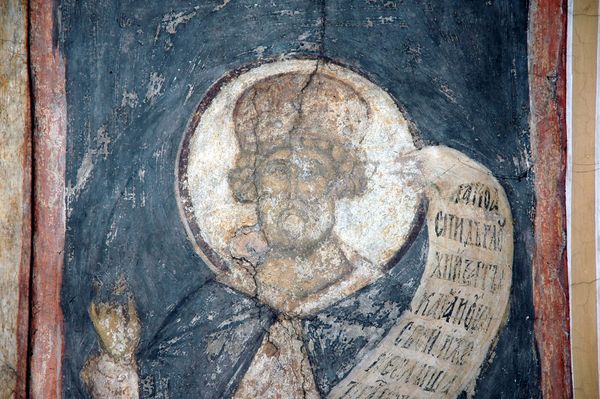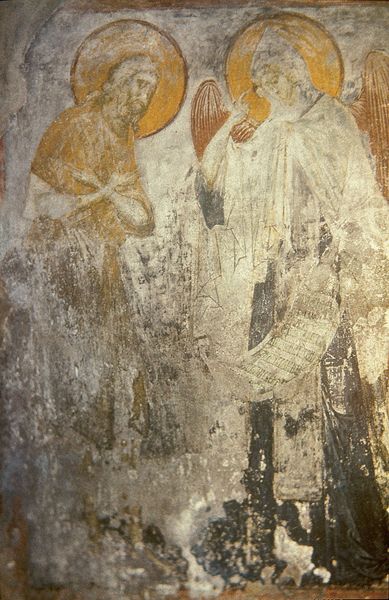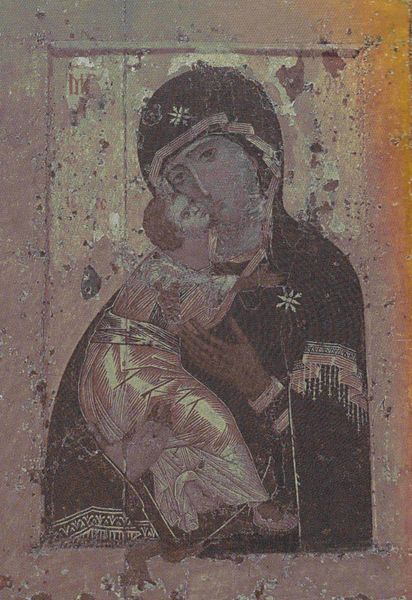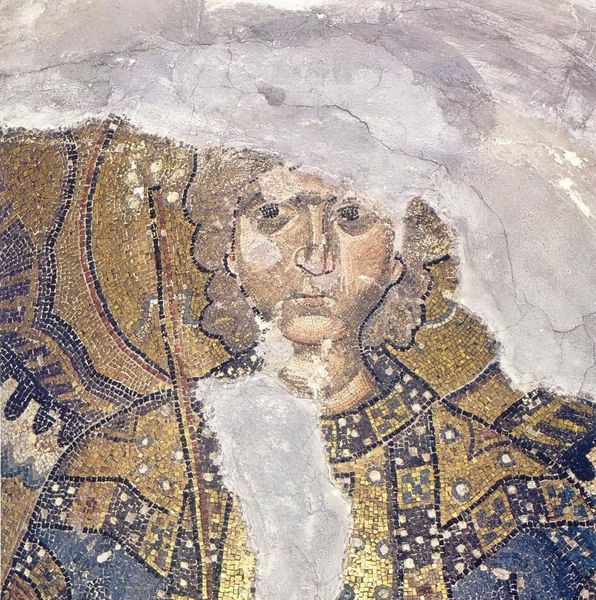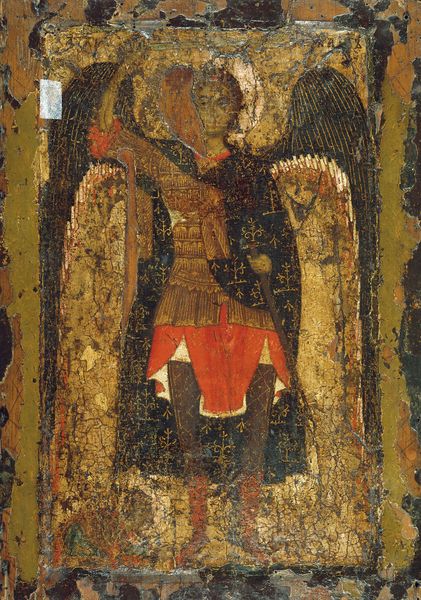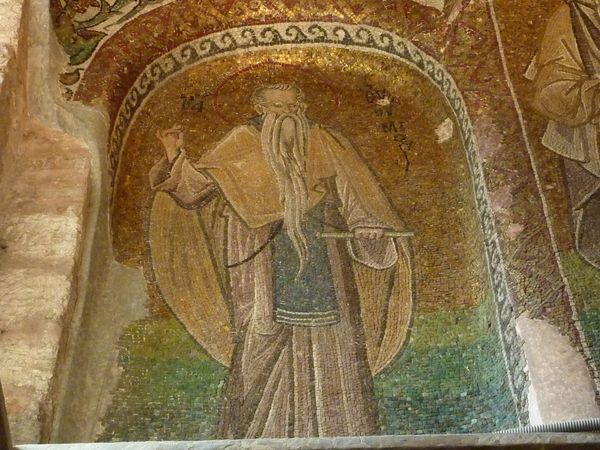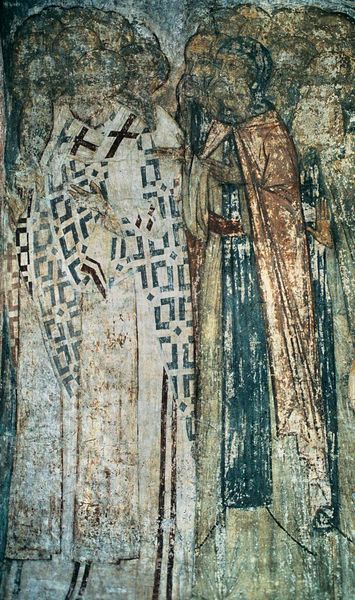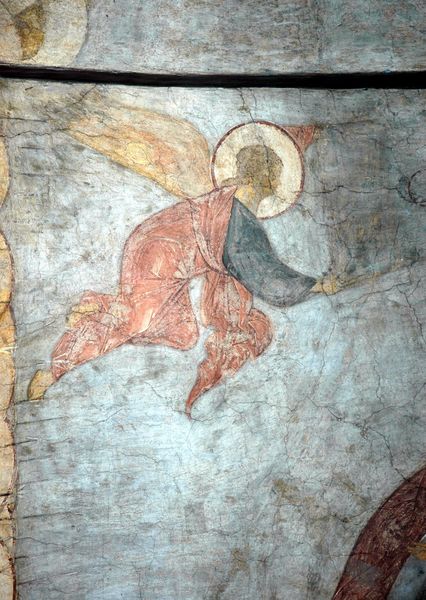
painting, fresco
#
portrait
#
painting
#
holy-places
#
figuration
#
fresco
#
oil painting
#
history-painting
#
academic-art
#
italian-renaissance
Copyright: Public domain
This fresco was painted by Lo Scheggia, in the Church of San Lorenzo in San Giovanni Valdarno, Italy, during the early to mid-1400s. Religious institutions such as the church were the primary patrons of art during the Early Renaissance. This is evident from the way the artist has painted this figure of a saint, as well as the other figures in the church. This painting, like others of its time, follows specific conventions to signal the religious status of the subject. The halo, for example, symbolizes the saint's divinity, the book is a sign of learning, and the walking stick indicates pilgrimage. Frescoes such as these were designed to instill specific religious values in those who viewed them. In this context, the arts were consciously put to work in the service of social power. If you'd like to understand this work better, I suggest that you research the economy of patronage during the Renaissance, as well as the history of artistic institutions, and religious symbolism of the period. Ultimately, art is most meaningful when considered in its social and institutional context.
Comments
No comments
Be the first to comment and join the conversation on the ultimate creative platform.
